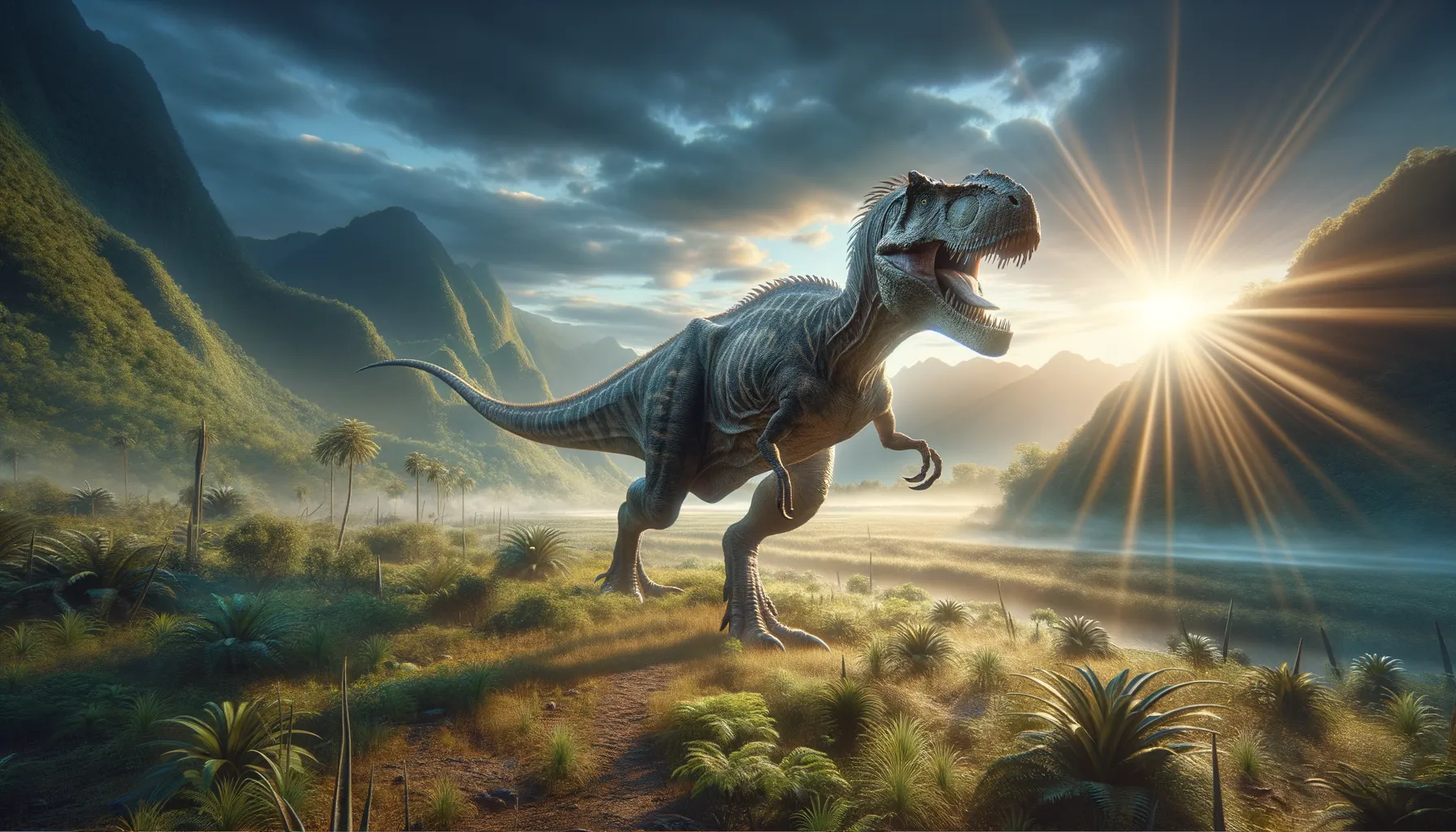
Yangchuanosaurus
Meet the Jurassic's fierce predator!
Period
Jurassic
Length
Approximately 33 feet long.
Height
Around 10 feet tall at the hip.
Weight
Approximately 2,200 pounds.
Yangchuanosaurus was a large theropod dinosaur that roamed the earth during the late Jurassic period. It had a massive skull and robust body, making it a formidable predator of its time. This dinosaur is named after the Yangchuan district in Sichuan, China, where its first fossils were discovered. Known for its sharp teeth and claws, it was well-adapted to a carnivorous lifestyle, hunting other dinosaurs and large prehistoric animals.
Diet
Yangchuanosaurus was carnivorous, primarily feeding on large dinosaurs and other prehistoric animals. Its powerful jaws and sharp teeth allowed it to seize and tear meat with ease.
Hunting
As a predator, it possibly used its speed and strength to ambush unsuspecting prey. Working alone or possibly in small groups, it likely relied on stealth and surprise to capture its meals.
Environmental challenges
During the Jurassic period, Yangchuanosaurus faced environmental challenges such as volcanic activity and fluctuating climates. These factors could have affected prey availability and habitat stability. Additionally, competition with other carnivorous dinosaurs required adaptability in hunting and survival strategies.
Speed
Estimated to run up to 25 mph.
Lifespan
Lived up to around 30 years.
First discovery
Discovered in 1977 in China.
Fun Facts
- Yangchuanosaurus was a large theropod dinosaur that lived during the Late Jurassic period about 163 to 145 million years ago.
- It was named after the city of Yongchuan in China, where its fossils were first discovered.
- Yangchuanosaurus measured around 25 feet in length, making it a formidable predator of its time.
- This dinosaur had sharp teeth and strong jaws, perfect for hunting and eating other dinosaurs.
- Yangchuanosaurus is believed to have walked on two legs, similar to the famous Tyrannosaurus rex.
- Fossils of Yangchuanosaurus have been primarily found in the Sichuan Basin of China.
- It is one of the better-known theropod dinosaurs from Asia, providing important clues about the ecosystem during its time.
Growth and Development
Yangchuanosaurus likely experienced rapid growth during its early years, reaching near-adult size relatively quickly. This growth would have required a high intake of nutrients, driving it to consume significant quantities of food. Maturation brought increased physical strength, allowing for dominance in its ecosystem.
Habitat
Yangchuanosaurus inhabited lush, forested regions with diverse plant and animal life. These environments provided ample food resources and sheltered areas for nesting and raising young. Rivers and water systems within these forests contributed to sustaining a variety of species, enhancing the biodiversity of its habitat.
Interaction with other species
It possibly coexisted with large sauropods and other theropods, resulting in competition for food resources. Occasional conflicts or aggressive interactions might have occurred over territory and prey. However, these interactions also established a balanced ecosystem where predator and prey populations could thrive.
Natural lifespan
Yangchuanosaurus possibly lived for about 25 to 30 years.
Reproduction
Yangchuanosaurus likely laid eggs in nests, possibly built in sheltered environments to protect them from predators. Parental care may have been limited, with hatchlings fending for themselves soon after birth. Survival rates depended on their ability to find food and avoid predation in their early stages.
Social behaviour
Yangchuanosaurus may have been mostly solitary, like many large theropods. However, social behavior could include cooperation during hunting or scavenging, possibly indicating some level of group interaction. Its fossil evidence suggests it was well-adapted to dominance in its ecological niche.
Fossil locations
Yangchuanosaurus fossils have been predominantly found in the Sichuan province of China. These fossils provide valuable insights into its structure and the environment it lived in. The discovery sites are significant for the study of late Jurassic fauna in Asia.
